For more than a decade, Puʻuhonua O Waiʻanae has been a sanctuary for islanders unable to access conventional shelter. It also belongs to a distinctly Hawaiian history of resistance, inclusion, and care.
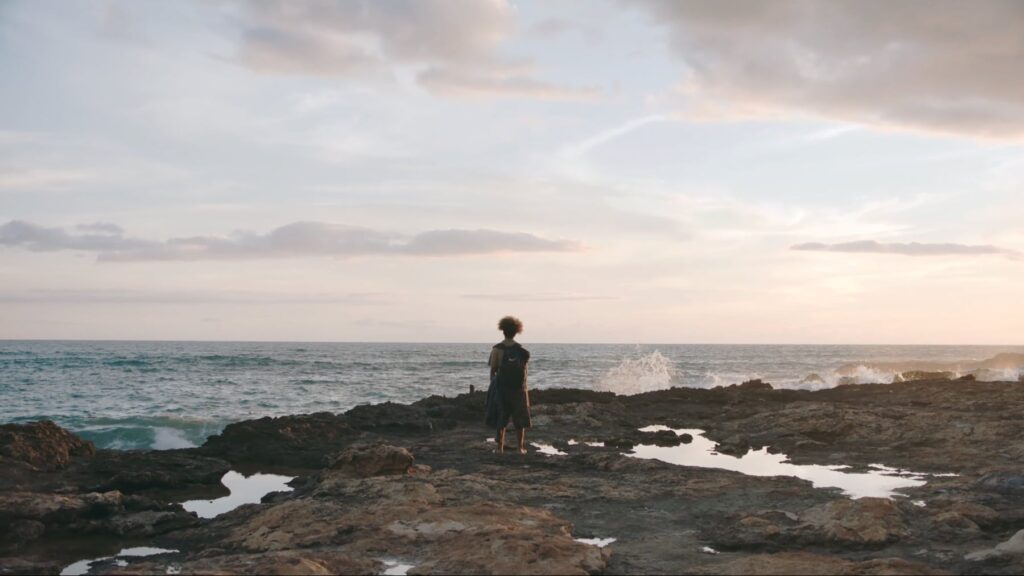
1. Seeking Refuge
See the child. Brown-skinned, bushy-haired, androgynous. She wakes in the remnants of a World War II-era pillbox. Folds her blanket and stuffs it in a backpack. Breakfast is a handful of Apple Jacks. She checks her phone, scrolling frustratedly. “Where the fuck are you?” No one answers.
So opens Kimi Howl Lee’s Kamaʻāina: Child of the Land. The 2020 short film follows Mahina, an unsheltered, queer Kānaka Maoli (Native Hawaiian) sixteen-year-old as she navigates the familiar yet hostile streets of Waiʻanae on the west side of Oʻahu. In search of shade, Mahina lingers at a Korean barbecue joint, only to be chased off by an employee: “Benches are for customers.” As night falls, we sense her deepening vulnerability — invisible to drivers passing on Farrington Highway, all too visible to men loitering in the park.
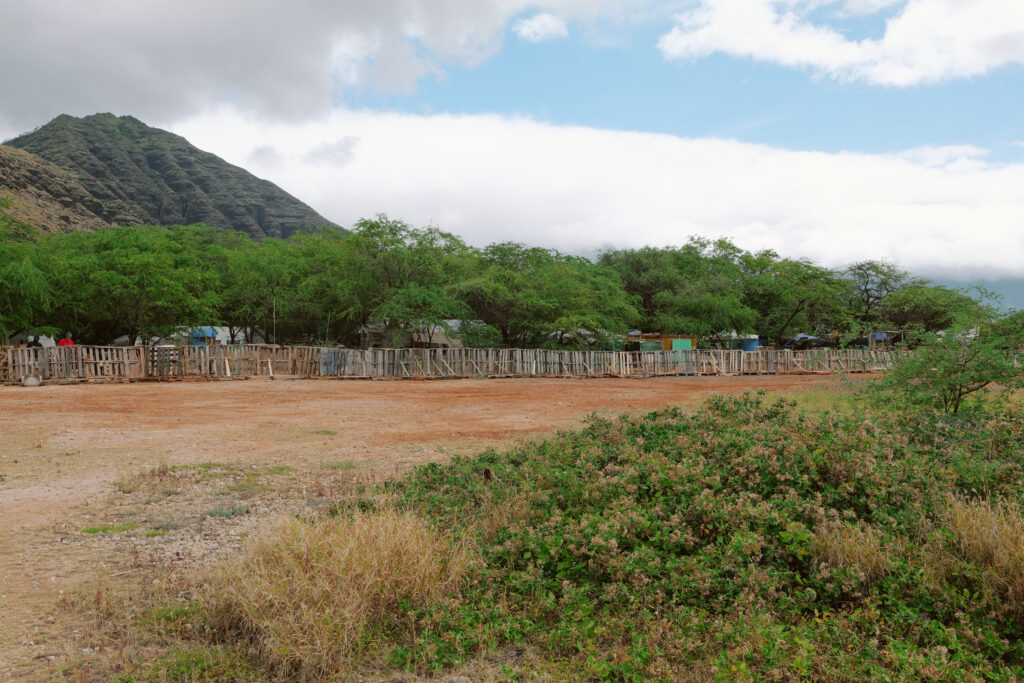
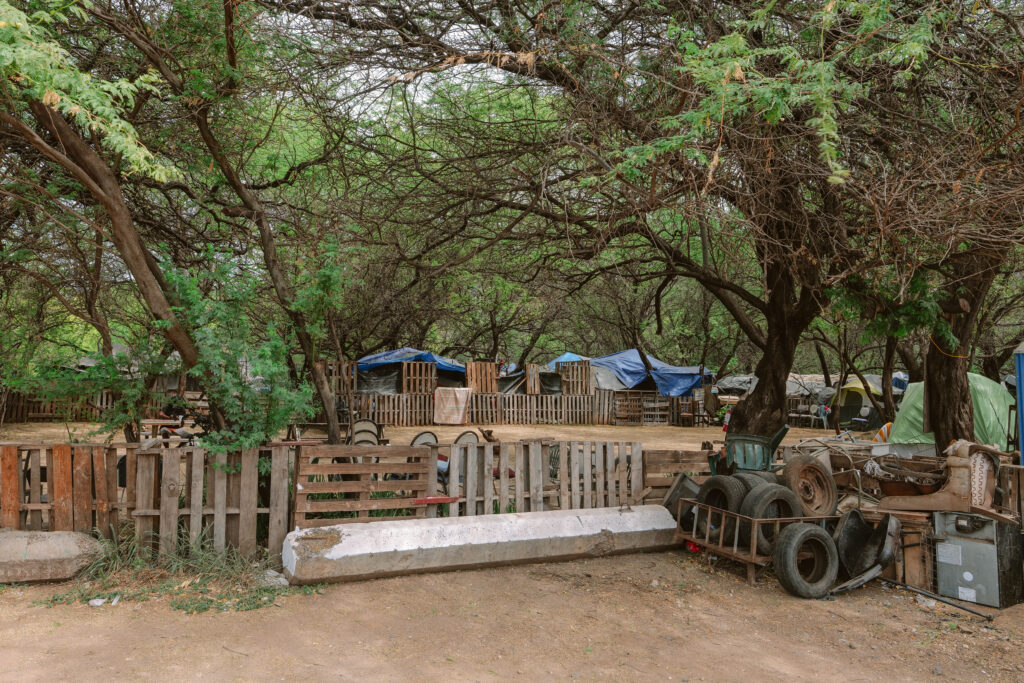
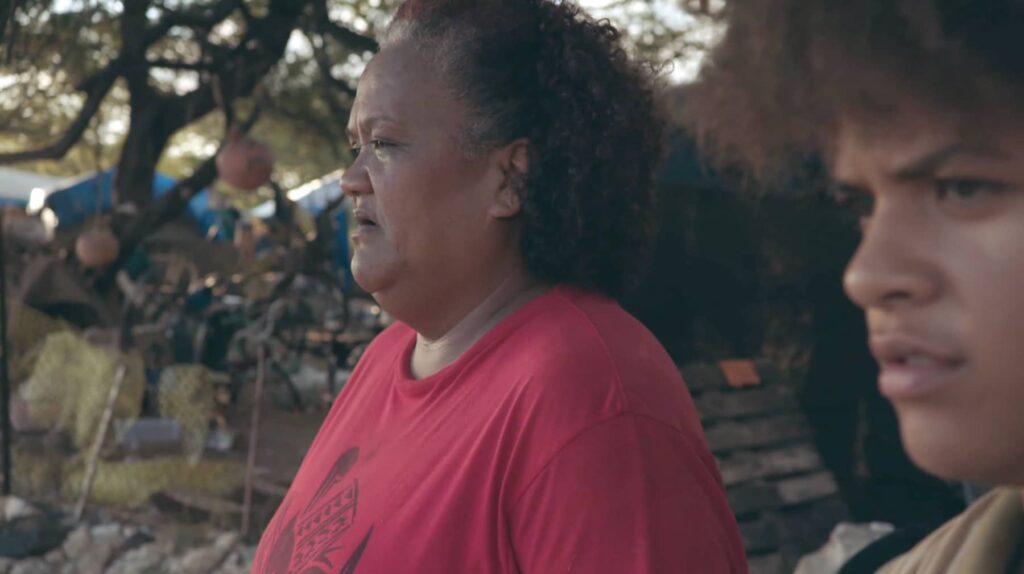
In the film’s third act, Mahina makes her way to Waiʻanae harbor, where houseless individuals have built a sprawling encampment of tents, tarps, shopping carts, bike parts, and other found materials, protected by a wall of stacked wood pallets. Mahina is taken to the group’s de facto leader, a tough but tender woman named Aunty Twinkle, who listens as Mahina explains her situation: estranged from her mother, recently kicked out by her girlfriend’s parents. Without hesitation (or red tape), Aunty Twinkle offers Mahina a place to stay in the village. In the film’s final moments, we see Mahina standing on the shore, gazing at a billowing ocean as Aunty Twinkle promises the community’s support: “You need that time, find yourself, go ahead. You need us with you, we will stand with you.”
Lee’s film responds directly to the experiences of queer and trans youth in Hawaiʻi, who are disproportionately represented among the islands’ unsheltered population. 2 Most of the cast, including Malia Kamalani Soon, who plays Mahina, and Twinkle Borge, who plays herself, have experienced houselessness. The film was shot on location at Puʻuhonua O Waiʻanae, the real-life settlement that helped inspire the story, which occupies roughly ten acres of state-owned property next to Waiʻanae Small Boat Harbor. In ʻŌlelo Hawaiʻi (the Hawaiian language), the term puʻuhonua describes a place of refuge, a “sanctuary, or asylum, a place of peace and safety.” 3 Tatiana Kalaniopua Young, a māhūwahine (Native Hawaiian transgender queer woman) and one-time resident of Puʻuhonua O Waiʻanae, writes that “as a refuge, puʻuhonua can be a person, a place, or a thing. Its main function is to create space for inclusion, harmony, protection, and safety.” 4
For more than a decade, Puʻuhonua O Waiʻanae has served as a sanctuary for islanders unable to access conventional forms of shelter — a safety net beneath the safety net. At any given time, the village is home to between 200 and 300 people, the majority of them Native Hawaiian, and a good number of them queer or gender-nonconforming. 5 Those who live at the puʻuhonua pay no rent but volunteer their time, running the onsite food pantry or taking shifts as security guards. The village is presided over by Borge, an openly queer Kānaka Maoli woman who has been houseless since 2006. She is known around the island as Aunty Twinkle — or, within the village, as Mamas. A team of mostly female “captains” help manage day-to-day affairs. “Visiting Puʻuhonua O Waiʻanae means entering as a guest into a space with its own unique governance structure led almost entirely by Kānaka Maoli women,” writes Tina Grandinetti, an Oʻahu-born Uchinaanchu (Indigenous Okinawan) scholar and activist who spent years studying and writing about Puʻuhonua O Waiʻanae. 6
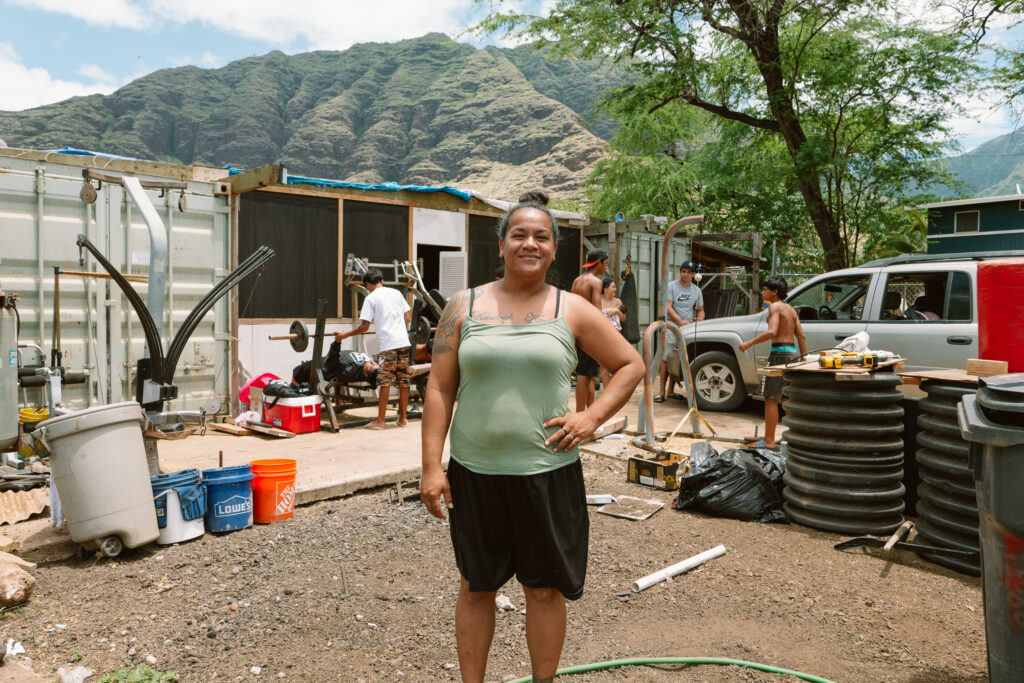
For residents, Puʻuhonua O Waiʻanae is a reprieve from an economic system that has made housing a luxury good, and from societal norms that marginalize those who do not fit mainstream expectations around gender, sexuality, or family structure. The need for such a refuge is acute. The state of Hawaiʻi consistently reports one of the highest rates of houselessness per capita in the United States, while its homeownership rate is among the lowest. 7 On Oʻahu, the most populous of the eight main Hawaiian islands, one of every two renters is cost-burdened, spending more than 30 percent of their income on housing. 8 In March 2022, the median price of a single-family home on Oʻahu hit $1.15 million, a 21 percent increase from the year before. 9 Even before these spikes in costs, the National Low Income Housing Coalition reported that an individual making minimum wage on the island could work around the clock — 168 hours per week — and still be seven hours short of affording the average rent on a two-bedroom apartment. 10
Meanwhile, on Oʻahu alone, 14,000 housing units — more than three times the unhoused population — are unoccupied, reserved as second homes or investment properties. 11 Roughly a quarter of all home purchases in Hawaiʻi are by out-of-state buyers, a share that grew in the first half of 2020 as the coronavirus fueled demand for private havens. 12 Between 2019 and 2021, the number of home sales to foreign buyers in the state increased by 25 percent, representing $22.2 billion in real-estate transactions. 13 Hawaiʻi real-estate executives boasted of sales growth in excess of 300 percent. In December 2021, two days before Christmas, amid a surge of the Omicron variant, the Wall Street Journal carried what the editors must have felt was a festive headline: “Since Covid, Hawaii Home Sales Over $10 Million Have Grown Sixfold.”
Once-permanent dwellings of all types are also increasingly being converted to short-term rentals. A 2018 report from Hawaiʻi’s Appleseed Center for Law and Economic Justice found that between 2015 and 2017 the number of vacation rental units in Hawaiʻi increased by 35 percent. Despite the passage of legislation intended to rein in the market, the trend has continued: in January 2022, the state counted 26,413 vacation rental units, a fifteen percent increase over 2017 levels. 14 Fueled in part by this unaffordability, Hawaiʻi’s population is steadily shrinking, as residents, including Native Hawaiians, become economic refugees from their homeland. 15
Puʻuhonua O Waiʻanae represents a rare place of refuge from, and resistance to, these economic forces. In adopting the name Puʻuhonua O Waiʻanae, the village lays claim to a history of inclusion and care that is distinctly Hawaiian. This runs counter to local media coverage, which has tended to frame the community as historically anomalous, isolated both from a legacy of dispossession that severed Kānaka Maoli’s generational ties to the islands, and from the lineage of Hawaiian-led, land-based resistance that followed. In fact, the harborside village is one of many puʻuhonua that have sprouted across the archipelago over the past half-century, most recently in 2019 in response to plans to build the Thirty Meter Telescope on the summit of Mauna Kea. 16 In extending its ethic of care to the lands it occupies, Grandinetti writes, Puʻuhonua O Waiʻanae can be understood as a kīpuka aloha ʻāina, a protected space in which Kānaka Maoli cultural practices and land relations persist. 17
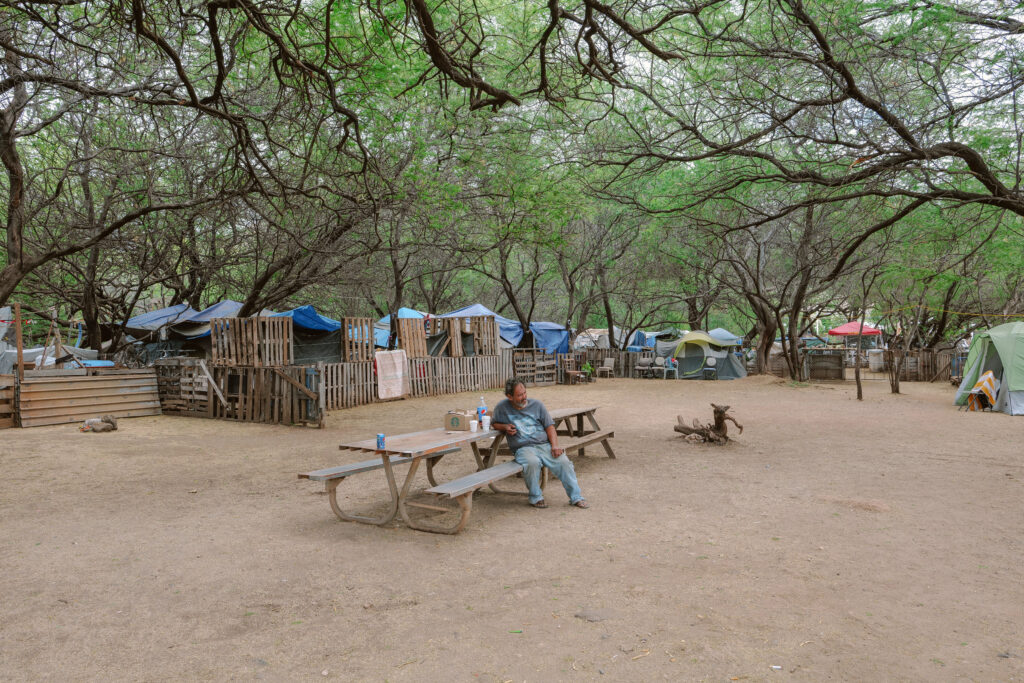
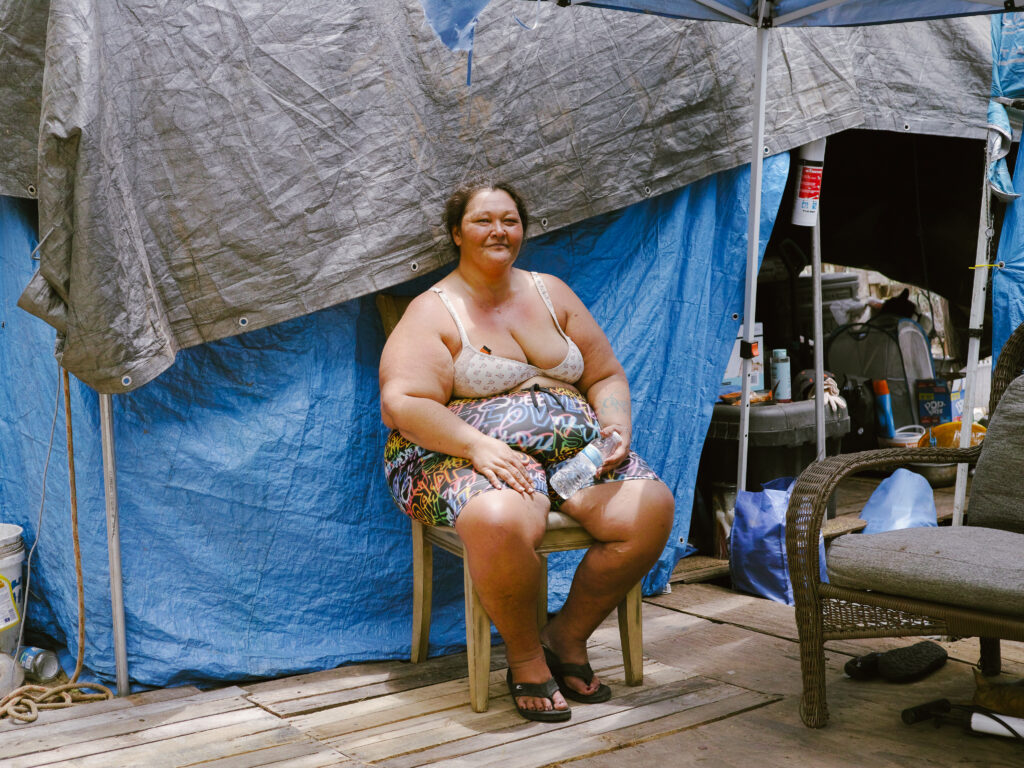
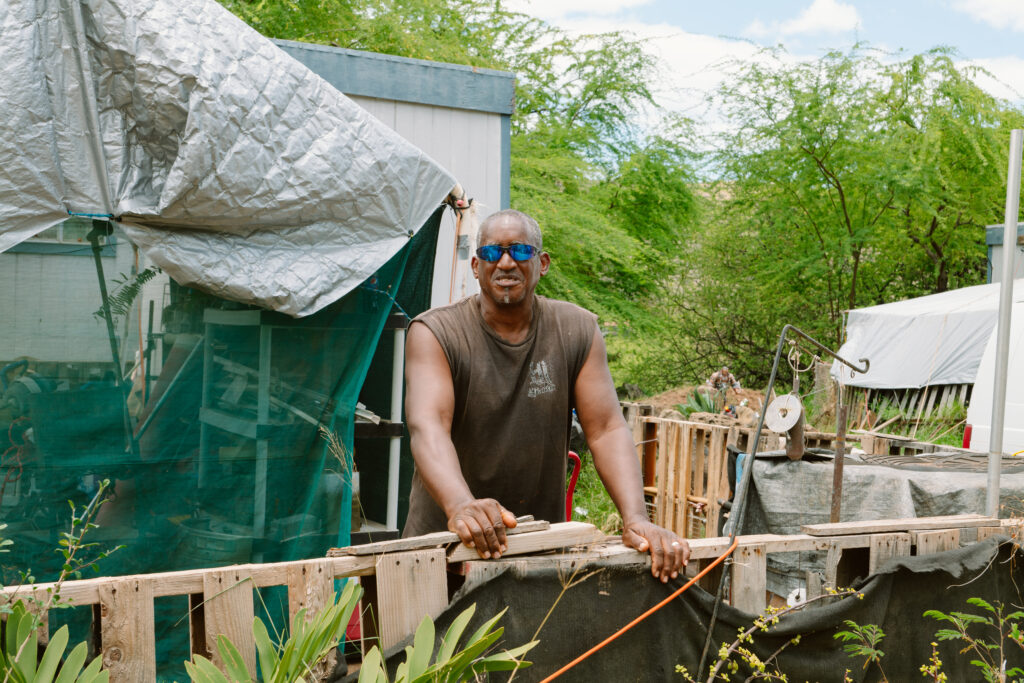
In Lee’s film, Mahina represents more than the thousands of queer teens in Hawaiʻi who will experience houselessness at some point in their lives. She is also a metaphor, Young tells us, “for Kānaka Maoli and … our ability to bounce back after chaotic disruptions, historical failures, and apocalyptic setbacks.” 18 Puʻuhonua O Waiʻanae similarly stands in for the many puʻuhonua that historically have offered Kānaka Maoli hope and sanctuary — communities that were treated by those in power as aberrant congregations of squatters and vagrants, but that from members’ perspectives were spaces of protest, embodied demands for self-determination and the return of stolen lands.
I visited Puʻuhonua O Waiʻanae multiple times in spring 2022, documenting the village with the Waiʻanae-based Kānaka Maoli photographer Josiah Patterson. The community was at an inflection point. After being threatened with eviction, the group had cut a deal with the state. They would relocate, but only once they had raised money to purchase property; until then, the state would not sweep the villagers from the harbor. In February 2020, with help from a nonprofit called Hui Aloha and funds from several major grants, Puʻuhonua O Waiʻanae bought a 20-acre parcel on Waiʻanae Valley Road, two-and-a-half miles mauka (upland) from the boat harbor. 19 In October 2022, the community broke ground on its new, permanent home, the Puʻuhonua O Waiʻanae Farm Village. Plans include 90 modest, A-framed duplexes — designed by residents — for 180 total housing units, along with shared kitchens, bathrooms, and gathering spaces. Already, villagers have begun to grow kalo (taro), ʻulu (breadfruit), papaya, banana, mango, and avocado.
Despite assurances from officials that the village will not be evicted while the mauka site is prepared, its existence at the harbor remains precarious. The community has reckoned with wildfires and floods, as well as indifference and outright aggression from other locals. At the same time, the radical space of inclusion created at Puʻuhonua O Waiʻanae threatens to be co-opted by state efforts to reduce houselessness, including Governor Josh Green’s “kauhale” initiative, under which tiny-home villages ostensibly inspired by Borge’s community are to be built across the state. 2
As an expression of queer Indigeneity and deep relationality, Puʻuhonua O Waiʻanae subverts the violent colonial assumption that land is a commodity to be bought and sold — an understanding that underpins not only the contemporary housing crisis, but also the climate emergency. At the same time, the means by which the community has negotiated an alternative to eviction illustrate the challenges of building a home outside dominant economic systems. Far from an “answer” to houselessness, the successes and struggles of the village demonstrate the urgent need for a much broader societal transformation — one that extends far beyond the puʻuhonua’s makeshift walls.
Read the rest of the essay in Places Journal.